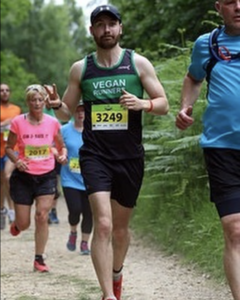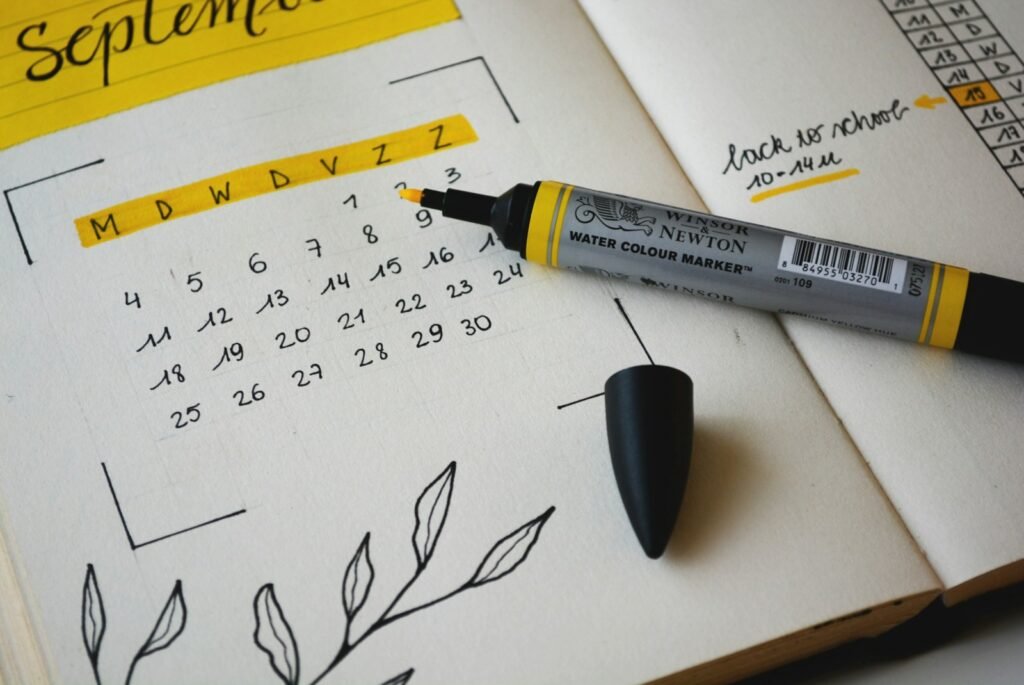Running can be an incredibly rewarding sport. It’s a great way to get exercise, improve your health, clear your head, and enjoy the outdoors. But it is also a sport that rewards consistency.
Consistency is really the key, but something that many people struggle to find. They see London Marathon on TV, get inspired, sign up for a race, train really hard and consistently for a few months and then as soon as the race is finished, that motivation and consistency goes out of the window, leading to sporadic runs when the mood takes them, or no running at all.
My Personal Running Journey
For a long time, I was that exact runner. It has been a journey full of peaks and troughs, injuries and illnesses, burnouts and comebacks.
I would watch everyone in that beautiful sea of mutual suffering at London Marathon, or watch Sir Mo gliding around the track at the Olympics, and next thing you know I’d be signed up to a half marathon, marathon, or on occasion, a 100km race (the Thames Path Challenge to be exact)! I would train like crazy for a few months to the point of burnout, survive the race, and then spend the next few months almost repulsed by the thought of putting my running shoes back on, until eventually the spark of inspiration would strike again and the cycle would repeat.

You can read about my personal running journey in much more detail here.
Having finally found that illusive consistency after many failed attempts, I can now say with confidence that I will be a runner for as long as I am healthy and able.
Practical Steps To Help You Build Consistency
In my other article, I spoke philosophically about the changes in my life that led to changes in my running, but here I want to focus on the practical steps that helped me finally make the shift from sporadic bucket-list runner to a year-round Mr. Consistent.

So, whether you’re a novice or a seasoned runner, here are a few small adjustments I made to bring consistency and sustainability to my running, that you can make too:
- Have a long-term mentality (aim to be a 90-year old world champion)
- Have a structure (but be flexible)
- Slow down
- Run early in the morning (if possible)
- Build up a shoe rotation
- Join a club
- Always have an event in the diary
- Understand your “why?”
- Don’t chase numbers
Have A Long-Term Mentality
Many of us have big items on our bucket-list like running a marathon or an ultramarathon, and end up ticking them off in the same way that I did – by committing and booking a race within the next 3-6 months on a moment of inspiration, no matter where our starting point.
Most of the time it works. As long as you are consistent enough in that period, you will get to the finish (if you don’t get injured). But what is the rush? By having a longer-term mentality and building up your aerobic base, going gradually through the distances over 1 or 2 years and giving them the respect they deserve, not only will you enjoy those events so much more, you will also be able to tick off a lot of PBs along the way.
Taking your time will also help you to build the right habits with running, building momentum so that when the time comes to sign up to those big marathons, you won’t be just thinking about surviving the distance, but enjoying it and being able to race, rather than just run.
One thing that helped me massively, is a change in mindset. I think this gets easier as we get older, but I came to realise that I wanted to be a runner for the rest of my life. Suddenly, instead of having the goal of completing a marathon or ultramarathon in the next 6 months, coming from almost no training, I started thinking more like “I want to be a marathon champion in the 90-95 year age group”! That shift in mentality massively helps to think of your running in a more sustainable way.
Have A Structure (But Be Flexible)
Part of making your training more sustainable is to have a structure, and to keep it simple. You probably have a lot going on in your life with family and work, so the more we can know exactly what we need to do on any given day and not overcomplicate things, the better.

I like to keep my training structure super simple. I run fast on Wednesdays, progressing these sessions in a logical way, and I go long on Sundays specific to whatever race I am training for. I have 1 full rest day (Thursday), 1 strength session (for me I do it on a Monday), and the rest of the days are easy running focused on building that aerobic engine and bridging the gaps between fast and long sessions. It looks like this:
M: Easy
T: Easy
W: Intervals
T: Rest
F: Easy
S: Easy
S: Long
Everything for me is built around getting the most out of those 2 key sessions on a Wednesday and a Sunday. Many off-the-shelf training plans will have an extra key session in the week – something like:
M: Rest
T: Intervals
W: Easy
T: Easy
F: Tempo/Threshold
S: Easy
S: Long
This might work fine for younger athletes or elite athletes who can dedicate more time to recovery, but for most of us who have full time jobs and families, it is just REALLY hard to recover enough between a Sunday long run and a Tuesday interval session.
By structuring the week with only the 2 key sessions, it allows for extra recovery to maximise those sessions, and crucially it gives a slight bit of flexibility to move a key session a day closer or further away, for when life gets in the way or you just feel like you need an extra day of recovery.
Slow Down
Part of that structure and the mindset to get everything out of the 2 key sessions is to slow down on the easy days. If you are new to structure, you might be used to running all of your runs at the same pace and intensity, which is not the most efficient way to train.

By slowing down on the easy days, you are allowing your legs (and mind) to freshen up enough to really attack those key sessions. For me, the day after a long run and the day after the rest day, I am going very slow to the point where it feels like I am barely moving.
If you know your zones this will be all in zone 1. The other easy days leading into the interval or long run day will start off similar, but progress in the 2nd half to be around the middle of zone 2 – always conversational pace.
Remember, we aren’t aiming to run the world’s fastest easy run! To avoid the temptation to go faster, remove pace altogether from your watch for these runs. Go entirely off feel and heart rate. Set up a data screen that just has elapsed time and heart rate, and spend a set amount of time in the right zone.
Run Early In The Morning (If Possible)
Again touching on the fact that life often gets in the way, I advocate for running first thing in the morning if possible.

Especially when you have kids or a high-pressure job, it is so easy for higher priority things to get in the way of you and your run. By getting out early you can relax, knowing you have ticked off a big task for the day, and getting moving first thing also sets you up perfectly for all the other aspects of your day.
For me, getting out before my daughter wakes up means running easy runs fasted, and for key sessions I will have a small bite of banana before I set out and take whatever fuel with me that I plan on using in a race if it is a long run. For long runs, I get up especially early to get it done without cutting too much into the weekend, where I want to spend quality time with the family.
If it is not possible for you to run early in the morning, try to carve out a set time every day that everyone knows is when you run. Make that time as sacred as possible.
Build Up A Shoe Rotation
Before my daughter was born, I would always run in the same pair of shoes, whether it was fast, long, or easy. But after my daughter was born, I literally didn’t run at all for 2 years.
When our lives eventually got to a point where I felt I could start running again, I started very slowly doing a run/walk for just 15 minutes, 3 times a week. Even with such little running, I would get injured after a few weeks, have to take a few weeks off and then try to start again. Each time I would start the cycle even easier, but 3 or 4 times I ended up back at the physio.
My running muscles, tendons, and ligaments had become completely unconditioned for running. I followed the physio’s strengthening exercises, which certainly helped, but it was only when I decided to add another pair of shoes with a slightly different profile that I was able to break out of this cycle.
Since then, I have built up to a rotation of 4 pairs of shoes and have been able to build up to around 80km per week with no injury problems at all in the last 3 years. I think shoes have been the number 1 factor in this.
Most running injuries are repetitive overuse injuries. By rotating shoes (and running surface) your foot strikes and rolls over the ground slightly differently from run to run, reducing the injury risk of overuse.
You don’t need to rush out and buy 3 pairs of new shoes straight away, but if you can slowly add an extra pair every few months until you have 1 pair for easy runs, 1 for speed, and 1 for long runs, that would be ideal. It will be helping your consistency a great deal.
Notes: From an en environmental standpoint, we of course want to be limiting our impact as much as possible, and so I understand that people may feel reluctant to buy extra shoes. But by rotating your shoes you will stretch out the lifespan of each individual pair, and so will still be replacing them at the same rate whether you have 1 pair or 3. You can also sometimes find hardly-worn pairs of shoes on eBay, Gumtree and at Preloved Sports CIC.
Join A Club
This is a simple one, and something I only did in the last month or so. Straight away, I have felt the benefits. By joining a club, you will be part of a supportive and knowledgable community to help you stay accountable and on track.
It is also just loads of fun meeting up with people who are as crazy about running as you are and to feel part of a team in what is typically a very individual sport.
If you are in the UK or any of the other countries lucky enough to have it, Parkrun is perfect for this. Make a habit of going with a friend or 2, or get chatting to people there. Building relationships around running is a great way to stay in it.
Always Have An Event In The Diary
One of the big reasons why my consistency fell off after my big races was that I had spent months obsessed with reaching a certain goal, and then when it was over it left too much of a void. Especially at that time when my love of running was more goals based rather than the simple pleasure of being out there every morning, by having nothing else in the calendar after those big races I just couldn’t find the motivation to get up and out the door early in the morning.

Nowadays, the simple joy of running is enough to keep me on track, but it always helps to have at least 1 race in the next 3-6 months.
It doesn’t have to be big or scary. Just get something in the calendar and it will give you something to work to.
Keep Your “Why” At The Forefront Of Your Mind
You always need to have your answer ready to roll off the tongue when anyone asks “why do you run?”. That will be very personal to everyone, but for me, I can give at least 3 good reasons.
Firstly, before he died, it was frightening how quickly my dad lost his health. In recent years, my Mum has also suffered with arthritis in both of her knees, limiting her mobility enormously. Again, this happened in such a short space of time that it terrified me. Running is my way of honouring them and showing gratitude to my health and mobility. Simply, I run because I can, and if I can, why wouldn’t I?
Secondly, I run to be a good role model to my daughter. I want to encourage my daughter to be active and to show her that you can achieve big things if you keep showing up and making small steps towards your goal every day.
Thirdly, with a family life that is often hectic, taking that hour or so every morning to spend some time with myself, and to start the day in the right way helps me to show up better for my wife and daughter, and indeed for anything I’m working on that day.
It doesn’t have to be profound, but understand your reasons, and keep them at the forefront of your mind when the going gets tough.
Don’t Chase Numbers
When you really get into running and are filled with passion and dedication, it is very easy to get sucked in to the thinking that more is always better.
Instagram and Youtube are filled with runners both elite and non-elite hitting big 100+ mile weeks.

Again, patience is needed here. Think of volume as one of the many levers you can pull in your training. You don’t need to pull that lever straight away.
Depending on where you are coming from, if you build to the point where you can handle a plan similar to the one listed above, and consistently hit your specific interval and long run sessions, it could conceivably be years before you reach a plateau.
Remember, you are just trying to improve by 1% with each of your key sessions, so as long as you are doing that, just keep following that path.
When you eventually reach that plateau, that is where you can, and potentially should, consider building the volume further. The key to keep in mind is that if you can keep improving on less, what need is there to do more?
Again, a long-term vision is much more sustainable. Be honest with what you can do every single week. You can only improve so much in 3 months, but if you keep showing up week after week, in a few years you will be a completely different runner. Believe in the process.
Conclusion
Running is more than just a sport – it’s a lifelong companion, a mirror, and at times, a form of therapy. Through years of inconsistency, burnout, injury, and emotional highs and lows, I’ve come to learn that the most powerful thing we can do as runners is to simply keep showing up. Not every day will be perfect, but each step we take with intention and care builds a foundation for the long run – literally and figuratively. If you’re searching for consistency, start small, stay patient, and remember your “why.” The rest will follow.
Have you struggled with consistency in your running journey? I’d love to hear your story. Drop a comment.

